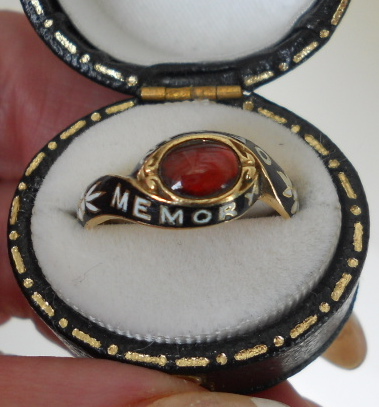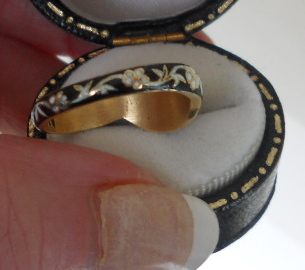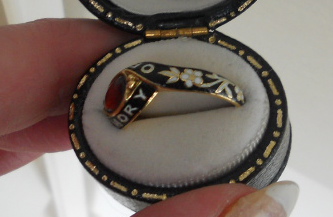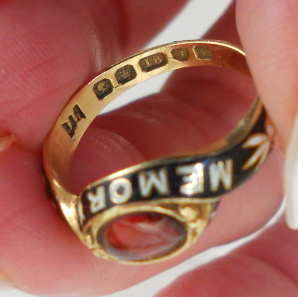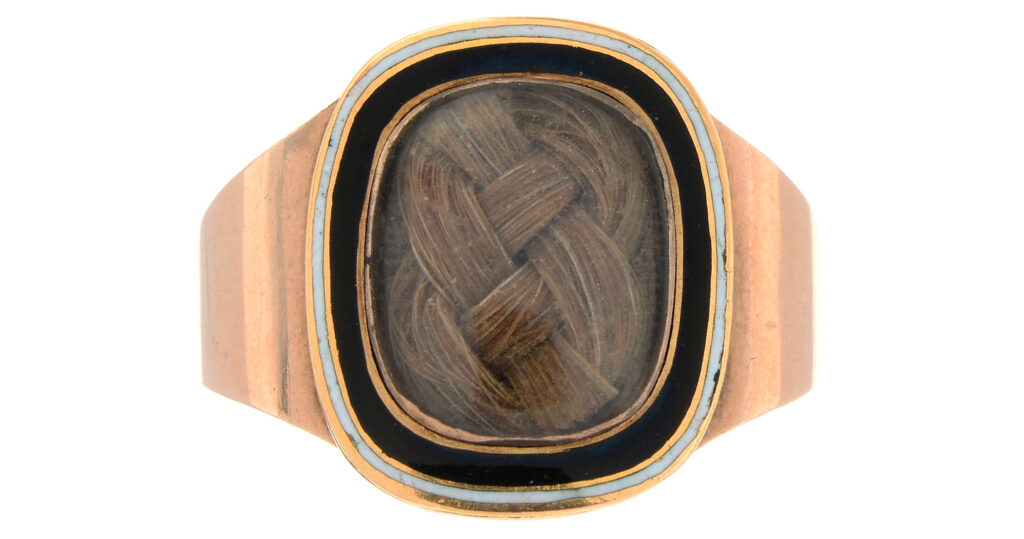19th Century Snake Ring with Various Mourning Symbols
Form factor is one of the most important things to look for when discovering oddities in jewellery design. Every era has their quirks and their set styles, mostly following whatever appeals to the mainstream.
As mourning/sentimental jewellery collectors, we’re particularly at the mercy of what sold well in its prime. Pieces were made to a high degree in order to facilitate the demand and necessity of the social display of mourning, hence when something that defies the trend pops up, then it’s a sight to behold.
Along with this high production and demand (people were going to die, families needed to display their grief), the Hallmark Act of 1854 saw the allowance for lower grade alloys to be used in jewellery construction, hence even higher production for mourning jewellery at smaller cost. So, once again, we need to discover some nice quirks surrounding popular movements in mainstream jewellery design/art.
Which brings us to this snake ring, which revels in the excess of its design and also constructs the design around its materials. We have the forget-me-nots set in white enamel across the black of the shank, which twists into a design that curves around the ring and twists in upon itself, providing the sentiment of eternity. The garnet and its rich, red colour is the main centrepiece of the ring, balancing the emergence from full mourning during the late second to third stage with the very organic mourning symbolism of the shank and the ‘In Memory Of’ dedication. This takes a lot of the visual styling of the mid-19th century and rises above the common due to the confluence of designs and sentiments. There’s the touch of white enamel (purity/innocence), the rather standard black enamel and ‘In Memory Of’ and then the use of the garnet on top. Do note that many mourning jewels were reappropriated in the hairwork memento on top with other stones, but this piece appears untouched and original.
The hallmarks are particularly crisp and its overall condition is pristine. Much of the time, rings like this were sparingly worn after being commissioned, or kept simply for their sentiment and not worn.
Pieces like this I tend to keep as pristine as possible. I would personally ensure that this time capsule from an earlier time remained as it was the day it was made, rather than harm the delicate enamel through wearing. There is a lot of indifference with some collectors towards Victorian pieces, mainly due to their recent history and how common they are to find (many were produced en masse through catalogues), but be it a piece of alloy or a finely created piece like this, the sentiment is the same and it’s an existing testament to a bygone age.




